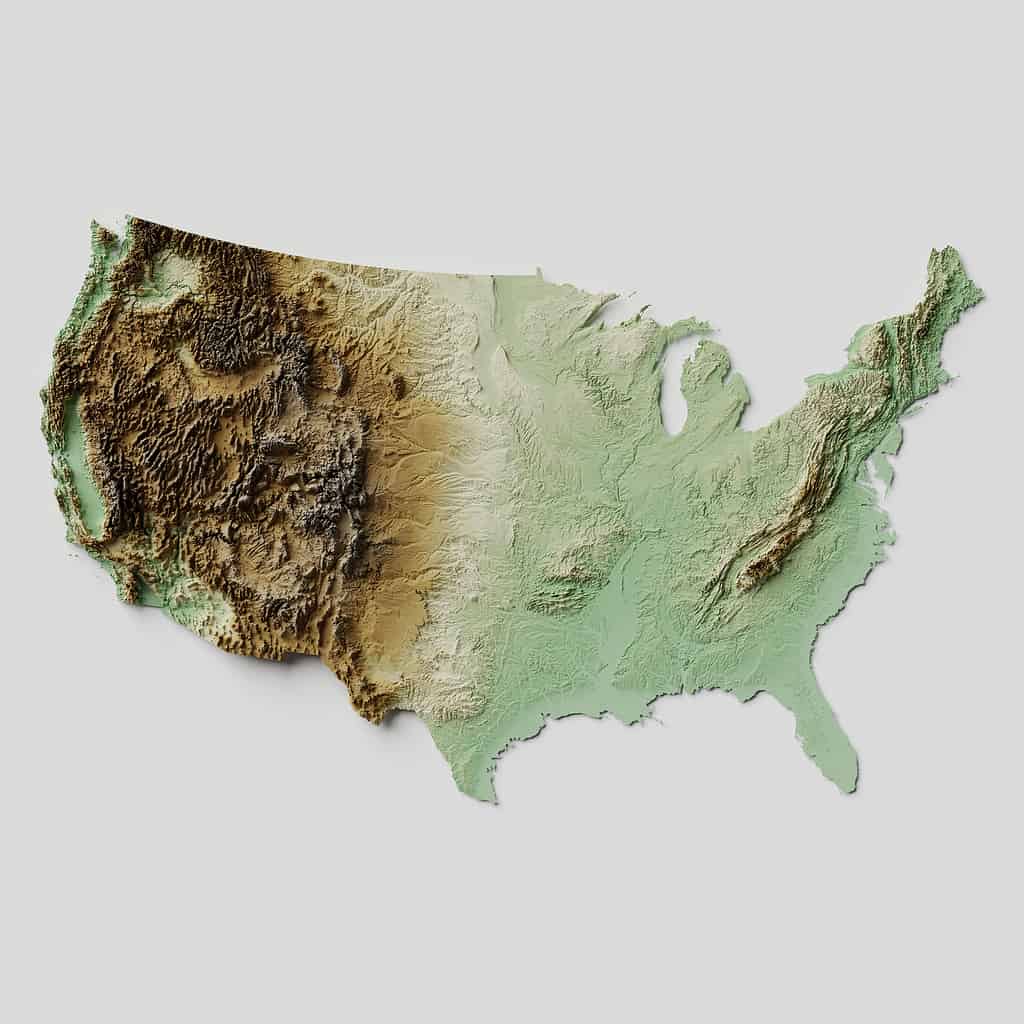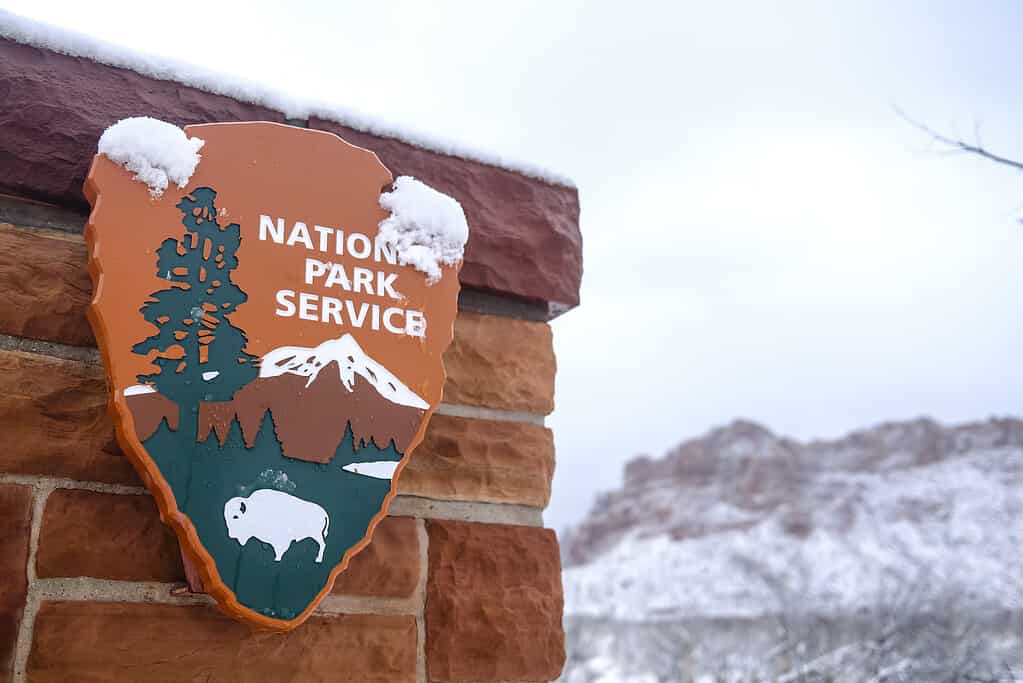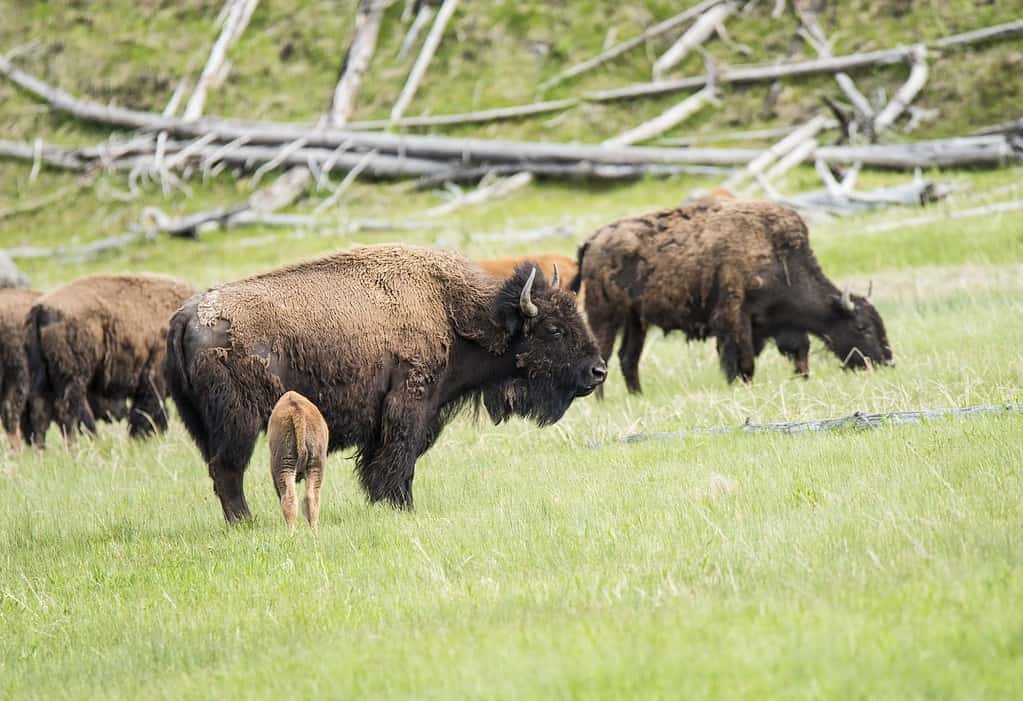The United States is the third largest country by land area in the world, after Russia and China, in addition to being the third largest country population-wise. The United States consists of the following:
- 50 states
- 326 Native American reservations
- 1 federal district
- 5 unincorporated territories
- Nine minor outlying islands
All of these segments of the US make up a large land area!
What is the Exact Acreage of the United States?

The United States’ acreage is 2.43 billion acres.
©iStock.com/Mlyons
There are a few ways that people talk about the acreage of the United States of America.
The Acreage of the Contiguous US
The contiguous United States consists of 48 states and the District of Columbia. The two excluded states are Hawai’i and Alaska. The contiguous US does not include all the unincorporated territories and outlying islands.
The contiguous US has a land area of 1,893,801,241.60 acres. However, if we include all the bodies of water within the contiguous United States, the area is actually 1,996,726,201.60 acres.
The Acreage of the Continental US
The continental United States is almost the same as the contiguous US, but it includes the state of Alaska. As the name suggests, it includes all parts of the United States that are on the continent of North America.
The continental United States has a land area of 2,259,849,881.6 acres. When all bodies of water are included, the acreage is actually 2,421,217,721.6.
The Acreage of the Entire US
When all states, territories, and outlying islands are included, the entire United States land area is 2,260,419,200 acres. When you include all bodies of water in the United States, the country’s area is 2,429,914,880 acres.
Who Owns All This Land?

The National Park Service has more than 400 park units.
©iStock.com/Mike Lewis
The federal government owns about 28% of the land in the United States or 640 million acres. Some of this land has been used for National Parks and National Monuments. Others are set aside for logging or wildlife protection and management. The departments that manage the land owned by the government include:
- The Bureau of Land Management (BLM)
- The US Fish & Wildlife Service (FWS)
- The US Forest Service (USFS)
- The Department of Defense (DOD)
After the federal government, the largest landowners are private citizens.
The Emmerson family owns 2.4 million acres of land in California, Oregon, and Washington. They run a lumber company, and much of the land is used for this purpose. They are the number one private landowner in the United States.
John Malone and The Malone Family Land Preservation Foundation own 2.2 million acres in Maine, New Hampshire, Colorado, New Mexico, and Wyoming. Their goal is land conservation so people can continue enjoying their area’s land.
Again, the Reed family owns 2.1 million acres in California, Oregon, and Washington. Similar to the Emmersons, they run a large logging and lumber company
Well-known entrepreneur and TV network executive Ted Turner owns 2 million acres in Kansas, Montana, Nebraska, New Mexico, and South Dakota. His lands are used for hunting, fishing, farming, and tourism.
How Is All This Land Used?

A good portion of the USA’s land is for livestock.
©Filip Fuxa/Shutterstock.com
The American folk song Home on the Range describes wide open places where buffalo roam and the deer and the antelope play. Although there are many more people in the US than when that song was written, and many places are much more developed, a lot of the US is wide open land used for agricultural purposes.
The number one use of land in the US is for feeding livestock. A whopping 41% of land in the US is used either for grazing livestock or to grow crops for livestock feed.
The second largest use of the huge amount of land in the US is forestland. Much of these lands are unprotected, but some are part of National, State, County, and City Parks. Companies own 14% of forestlands in the United States.
The third largest land use in the United States is for growing crops. Nearly 1/5th of the land in the US is used for this purpose.
Urban areas only take up 2% of the USA’s acreage, though over 80% of the country’s population live in these areas.
The photo featured at the top of this post is © iStock.com/Mlyons
Thank you for reading! Have some feedback for us? Contact the AZ Animals editorial team.






